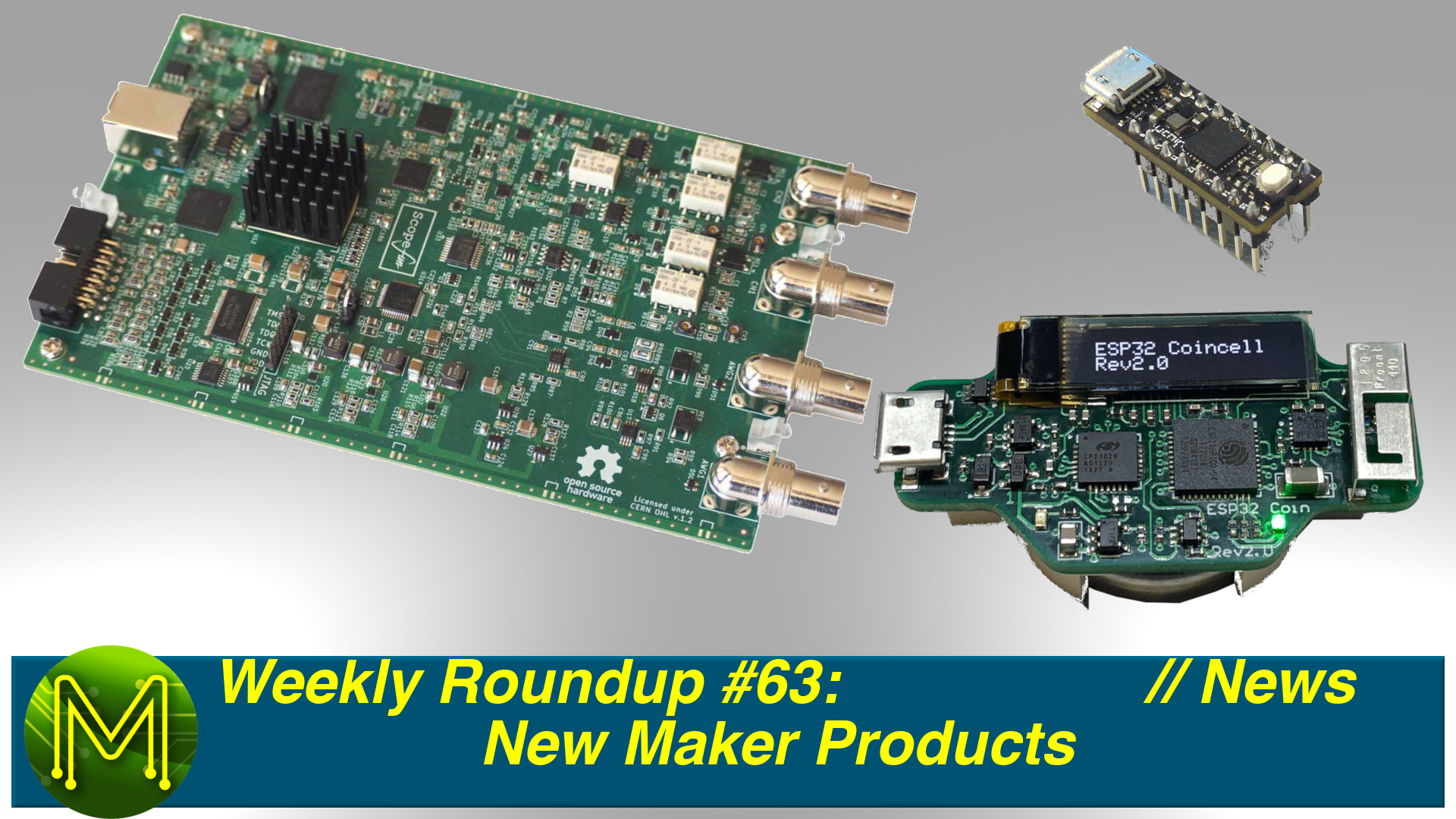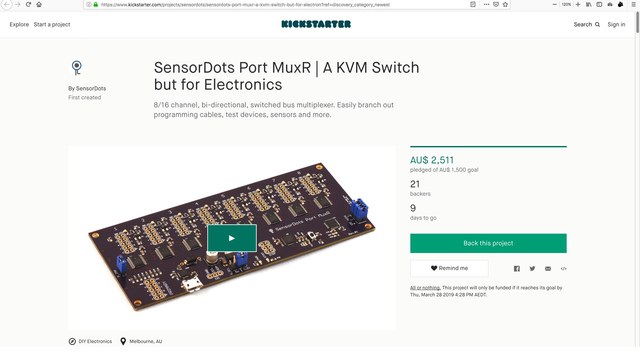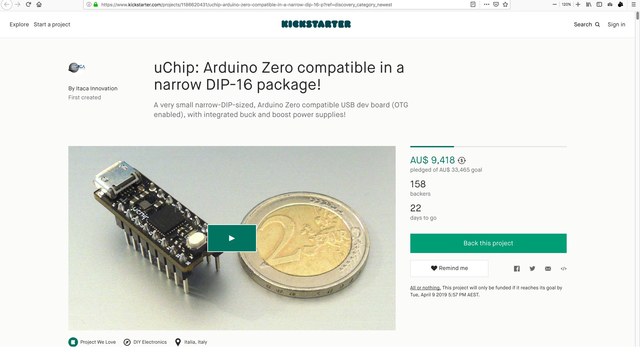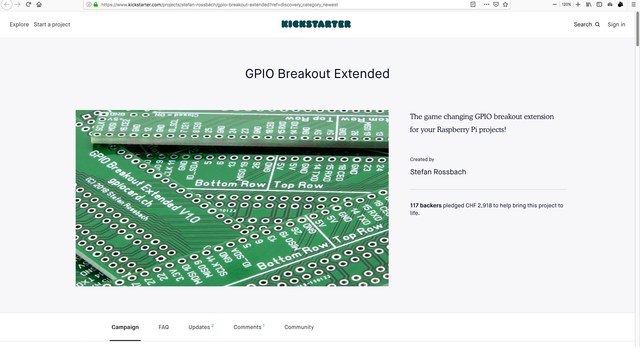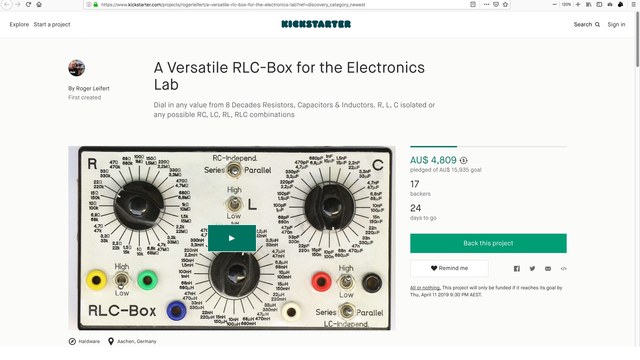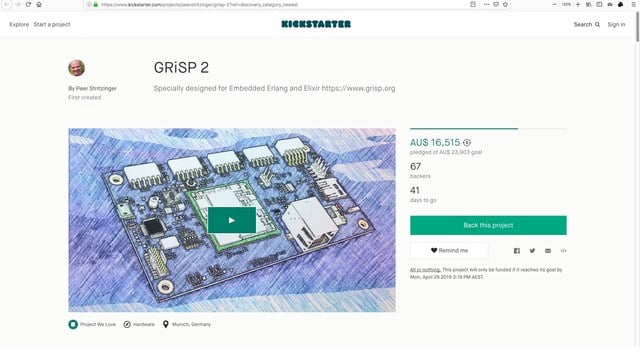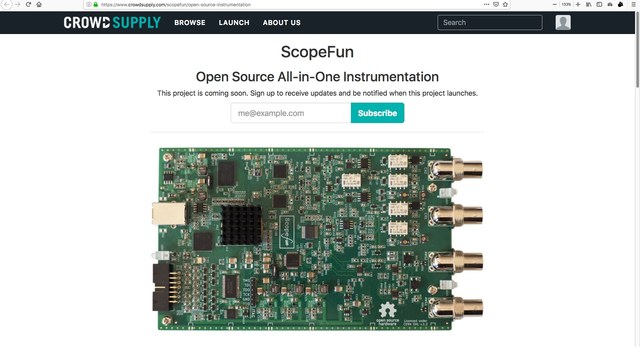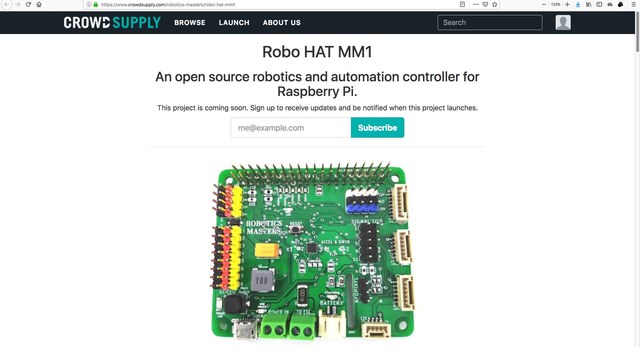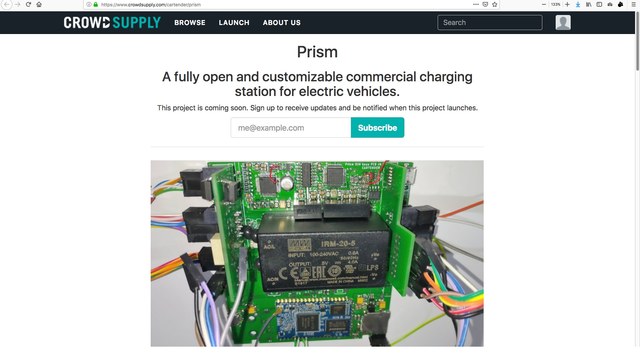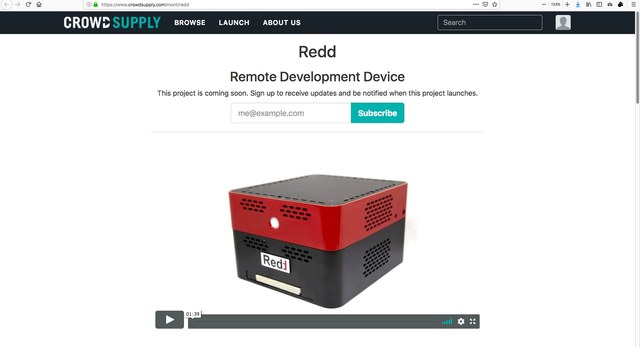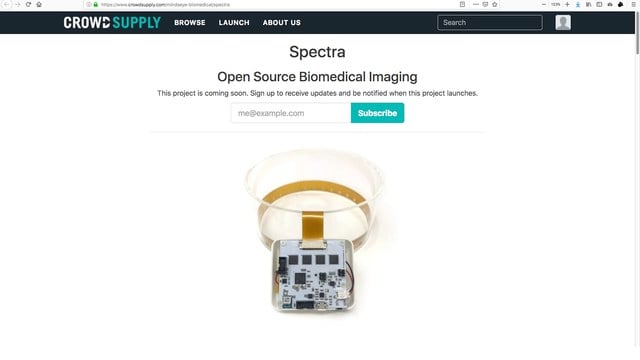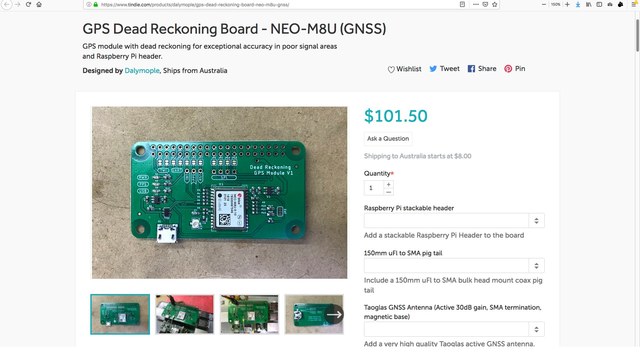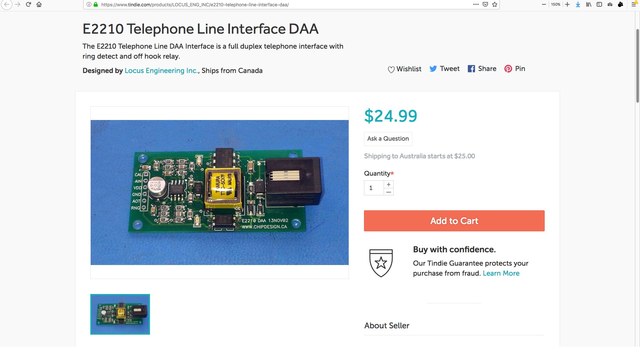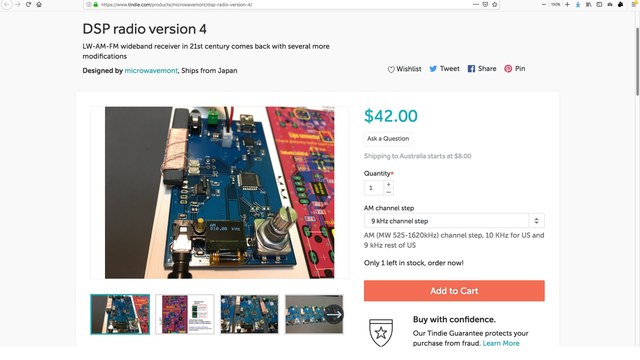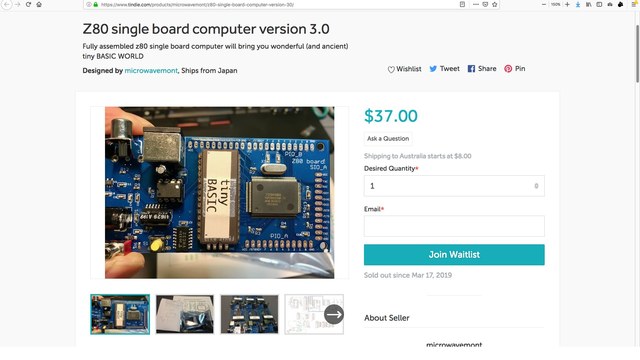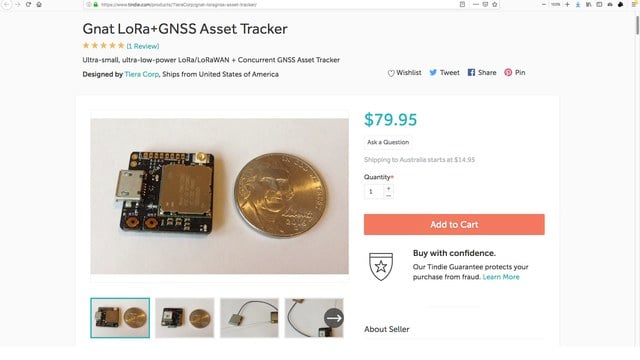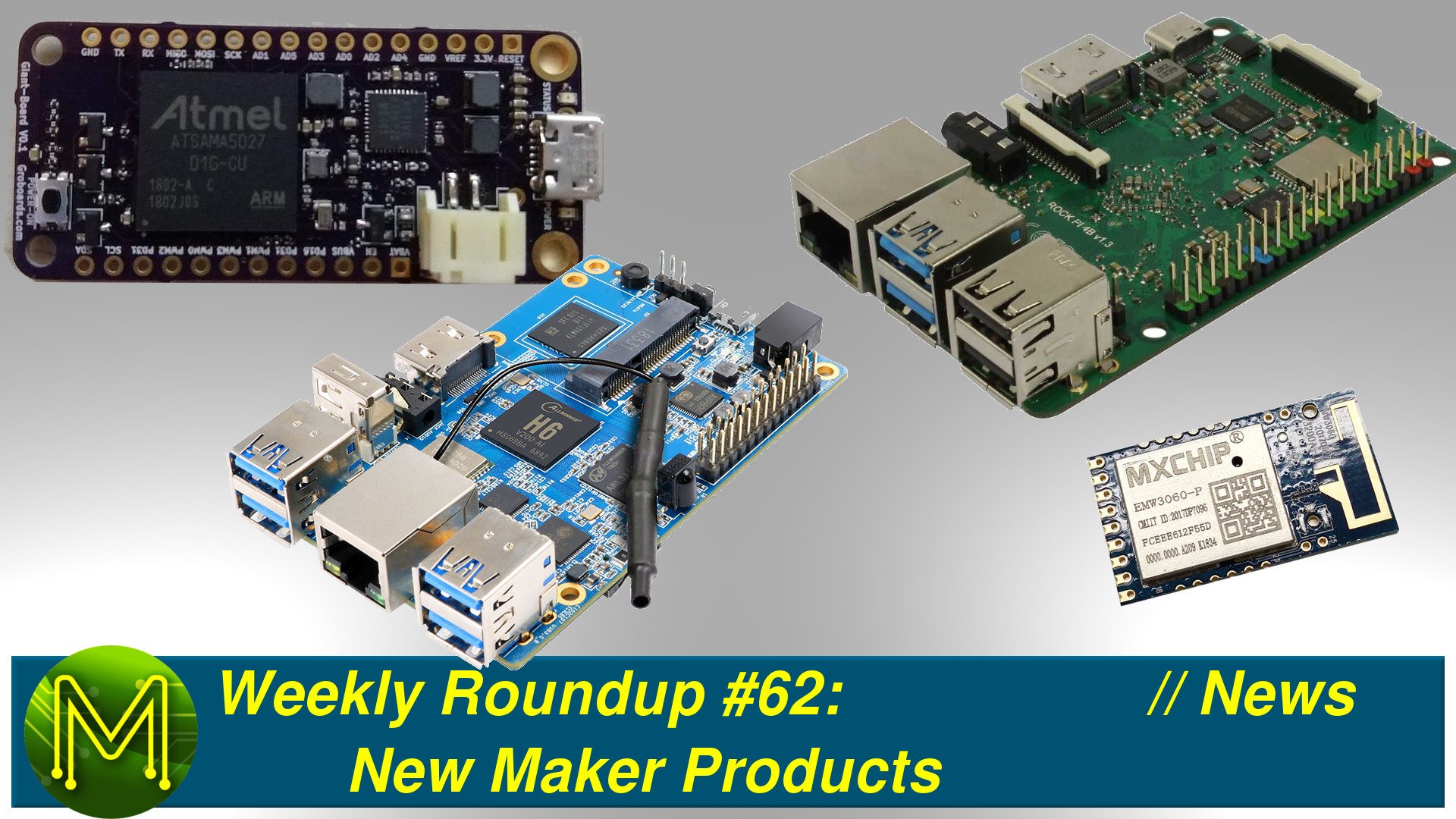Weekly Roundup #63 - New Maker Products
So much has happened recently that the Roundup of New Maker Products is split into two. This is all the Crowd Funding and Tindie stuff. So, go and hide your wallets!
Crowd Funding
KickStarter
Kickstarter is starting to see a whole bunch of dodgy free energy campaigns these days, but here’s a couple that don’t violate the lays of physics…
PiArm
Back in Weekly Roundup #23, we saw the meArm Pi which is a 3D printed Pi driven robotic arm.The PiArm is a step up from that giving you a full 6 axis robotic arm. It is fairly expensive, but the creator has chosen to go down the pressed metal path rather than using 3D printed parts. There’s no details on accuracy, but looking at the specs of the servo, it’s geared for a 0.24 degree accuracy. So don’t expect Pick & Place style accuracy on this thing. Of course, since it’s driven from a Pi, you can connect cameras & sensors to the arm.
SensorDots Port MuxR
This next one is from a fellow Ozzie Maker who I met at the last Adelaide Maker Faire.He built a KVM switch specifically for his MappyDot, (which you can pick up from his Tindie store), but he figured it can be used for other things such as:
- Branching out programming cables to multiple devices.
- Multi-MCU communications.
- Joining I2C, SPI or USB busses together.
The Port MuxR is a bi-directional, 8 or 16 channel switched bus mux capable of handling either analog or digital signals, so is logic level neutral. So, you can multiplex any esoteric bus you want. There’s adaptor boards for JTAG and ICSP, if you have a need for gang programming. He’s also written a pretty schmick GUI interface for control.
Nice.
uChip
We’ve seen a tonne of tiny MCU boards on the market in the past.The uChip is no exception, but this one aims to be a drop in replacement for a standard through-hole component. It runs the ubiquitous SAMD21 and pushes out 14 GPIOs, with, most importantly Vcc and GND in the standard positions of pin 16 and pin 8. There’s an on-board 5v regulator, so can handle any PCB DC supply, but of course the SAMD21 isn’t 5v logic level tolerant for inputs.
However the DIP style means that you can actually use it as a drop in replacement for any number of through-hole ICs. There’s also a bunch of examples on the campaign page using OLED and VGA displays.
GPIO Breakout Extended
Here’s another breakout board designed to make bread-boarding easier for the Raspberry Pi. The idea is to move all the breakout pins from the middle to the side. Freeing up as many holes on the breadboard and connecting up power and GND rails. The Pi header is also pushed out to allow for hats to be placed on top.PYXA | DIY Game Console
If you’re in to retro gaming, then the Pyxa is a pretty complete DIY game console. It has the typical line-up of features such as 128 by 160 OLED display, 8 buttons, buzzer, LiPo charging, micro SD slot and all built around the universal ATmega328P. So, can be re-programmed using the Arduino IDE. The 600mAh battery can supply enough juice for 4 hours of continuous button mashing joy.Versatile RLC-Box
This is a pretty simple campaign for an RLC box. This is one of those things that is a requirement for every electronics toolbox. This one, however, not only allows you to dial in resistor values from 1 ohm to 100Mohm, capacitor values from 10pF to 68nF and inductor values from 10nH to 150mH, but also allows you to organize them all in arrangements of RC, LC, RL, RLC or fully isolated.Nice.
GRiSP 2
Back in Weekly Roundup #50 we saw the Grisp board on Tindie. This is a campaign for the next revision of that board and provides several enhancements.It now uses bare-metal Erlang with RTEMS RTOS. Supports Elixir, which is a dynamic language for scalable applications built on top of Erlang, an added Ethernet port. Modular design and more responsive booting and I/O. It also now runs the NXP iMX6UL, which is a Cortex-A7 SoC running at 696MHz along with 4GB eMMC. So a fairly major step-up from the previous revision.
freeDSP-aurora DSP
If you’re an audiophile, then this one looks interesting.It’s a little expensive, but for 195 euro you get an 8 channel DSP built on the Analog Devices ADAU1452. It also has an XMOS multi-channel bi-directional audio streaming IC, ESP32 WiFi for control, USB for both control and 16 channel audio streaming to your PC without drivers, a 32bit DAC & ADC supporting up to 192kHz, as well as secondary ADC and DAC supporting THD, 8 balanced analog inputs and outputs as well as SPDIF in and out. A fairly complete board for audio heads.
Crowd Supply
Meanwhile over at CrowdSupply there’s a couple of interesting things in pre-launch …
ScopeFun
The ScopeFun aims to combine 5 common bench-top tools into one fully hack-able unit.- Built around the Artix-7 FPGA, along with 512MB DDR3 RAM and Cypress FX3 USB 3.0 driver, it gives you:
- An oscilloscope with 250Msps on two channels or 500Msps on one channel with 10bit resolution and 128Ms storage to RAM per channel.
- 2 channel waveform generator at up to 200MHz and 12bit resolution.
- 2 channel spectrum analyzer up to 125MHz.
- and 12 channel logic analyzer at up to 250Msps.
There’s also software support for Windows, Linux and OSX with full GUI and access to a Python library for hacking.
Microchip Get Launched 2019
Microchip are starting to launch several competitions this year.One of them is in conjunction with Mouser Electronics and Crowd Supply. If you have a cool project that show-cases a Microchip component and you launch it on Crowd Supply anytime within 2019, you can also enter this competition.
Robo HAT MM1
Another one in pre-launch is the robo-hat MM1.This is an open-source board designed specifically for robotics and so has all the essentials like:
- 9DOF IMU.
- INA219 current sensor.
- SAMD21 extending the number of Raspberry Pi GPIOs.
- 8 24bit servo control headers.
- 4 16bit RC controller inputs.
- NeoPixel output.
- DroneCode compliant connectors.
- LiPo charging with 5v regulator able to power the Pi.
And it also supports Scratch, PX4, ArduPilot, CircuitPython, SeeSaw and of course the Arduino IDE.
Prism
The Prism is a bit of a bold project, mainly because I’ve had enough of electrocuting myself with mains power.This is a fully hackable charging station for electric vehicles. It supports single and 3 phase power input with an all important RCD capable of tripping at 30mA, which isn’t the standard medical 10mA, but good enough for residential use. It’s driven by an ATM90E36 SoC running Linux and an STM32 which are capable of performing FFT analysis on voltage and current. So is a pretty complete package, that’s also hackable.
Oh and it also has an LED strip output if you really want to pimp your ride.
Redd
Developing for hardware is great, but you always need to have whatever you’re developing on, physically present.Not any more with the Redd. This box aims to provide everything required to remotely control and develop on embedded devices. It gives you two USB 2 & two USB OTG ports, 6 relays, switchable SD card & SPI flash, GPIO controlled FPGA along with SPI, I2C and UARTs.
Spectra
There’s been a few biomedical Maker products in the past, like the HealthyPi back in Weekly Roundup #36.This one is unusual in that gives you bio-impedance tomography, which essentially means that you can scan anything placed within the “phantom” which is a bio-medical term for that circular bit. Not only can you scan the fruit of your choice, but also measure blood flow changes and even determine the presence of hemoglobin in blood samples. You can fetch the data over Bluetooth at 160kSPS with 16bit resolution and it also contains an accelerometer. So theoretically you could do a full 3D scan of an object.
GroupGets
And over at GroupGets …
Ion Specific Electrode Probe Interface
You can pick up a temperature compensated pH sensor. Access is over plain I2C, accepting either 3.3 or 5v logic levels. If you’re accessing via an MCU, then there’s a bunch of libraries for the Arduino and Particle.io IDEs as well as MicroPython. There’s also Python and Rust libraries for the Raspberry Pi.Of course, you’ll still need a pH probe.
I2S Mezzanine
The I2S Mezzanine is a 96board compliant audio board, which provides 3 stereo inputs, one mic input, and three stereo outputs including a headset amp. These are all routed through two DSP chips on an I2S bus allowing the board to be configured as two stereo outputs or inputs. There’s also an I2C bus for control.Baconbits
Last year in some Weekly Roundup we saw the BaconBits from Michael Welling. This is a cape for the PocketBeagle that provides a USB host port, a microUSB port with FT230X USB to UART bridge, an MCP23S18 7 segment display, single RGB LED, accelerometer, thumbwheel and user buttons. There’s also a bunch of Embedded Apprentice Linux Engineer courses available based on this board, which are starting to be pretty popular.RT-NVT2008
The NVT2008 is a bi-directional logic level converter from NXP. This can translate a 1 to 3.6v signal on the low side to a 1.8 to 5.5v signal on the high side. It’s much better than plain old BSS138 MoSFETs as it’s capable of hitting 33MHz, so is good to go for SPI signals. The open-drain outputs also allow it to be used for I2C.Elektor Pinball Clock Board
Are you into retro pinball machines? This groupgets campaign is for a PCB that can control an electro-mechanical pinball score reel unit to display the current time. It has WiFi access via an ESP8266, a DS3231 RTC for keeping time, and 3 outputs controlling chime bells. All the outputs can drive up to 30v, which should be enough for most pinball solenoids.Note: that this is a one off product that they’ll only produced if they have enough backers.
Maker Shops
Tindie
Over at my favourite Make store, Tindie…
Yamaha YMZ294 board
You can pick up a retro chiptune player based on the Yamaha YMX294. This was a classic chip used in the 80s to provide “music” for console. This PCB also has an ATmega328 onboard to allow control using the Arduino IDE and small amplifier and speaker.Raspberry PI Thermal Paper Printer Hat
I actually might get one of these for when I start mass producing my wyrks boards.It’s a Pi hat with on-board thermal printer, but it also has a DC jack accepting a 12 to 18v DC power supply which can also power the Raspberry Pi. It has a 7 dot printing head able to print 7x5 text or 105x7 graphics per line and is able to detect paper jams.
USB IR Blaster Kit
This Irdroino Pronto Arduino shield allows you to send any PRONTO HEX based IR codes, so you can get it to control almost any IR based device. Comes with Irdroino IR shield, ATmega328 Arduino, plastic enclosure and USB cable.AD5689R Dual Precision DAC
The AD5689R is a dual DAC capable of 16bit resolution giving 38uV per bit resolution. Powered from a 2.7 to 5.5v supply it’s accessible via SPI.GPS Dead Reckoning Board
If you want to be able to improve your GPS capability in high noise environments, then you can’t go past the UBlox NEO-M8U. This is a standard GPS receiver with Untethered Dead Reckoning. It will improve your positioning capabilities without being tied to any mobile network. This unit will draw a max of 67mA with an average of 29mA and can acquire a cold-start fix in 57s and a hot start fix in 1.5s. It also has some pretty decent accuracy that improves a lot on plain GPS positioning.E2210 Telephone Line Interface DAA
If you really want to access some retro kit, then you can’t go past this breakout board that interface to a POTS handset. POTS stands for Plain Old Telephone Service.DSP radio version 4
Another blast from the past is this DSP radio, which is capable of picking up any AM band from 95kHz to 32.650MHz and any FM band from 53.4MHz to 134.3MHz. The whole thing is tuned not by traditional analog means, but by DSP. So, you can get much better tuning resolution. Has an on-board USB to UART bridge, LiPo charger, headphone jack that uses the headphone cable as an antenna and OLED display. Control is over plain old I2C.LiPo Charger for Teensy
If you’re a fan of the Teensy, then this tiny LiPo charger along with 170mAh battery fits right underneath any of the 32bit Teensy boards.Piezoelectric micro AIR blower
This piezo-electric air blower is an upgrade on the previous one by microwavemont, which drives a piezo-electric speaker at 26kHz to generate a small air flow. Runs off a 5v DC supply at 200mA during operation.Z80 SBC Rev 3
Another one from microwavemont. This an upgrade on a previous board that provides a fully functional Z80 based SBC using the Toshiba TMP84C015, which contains the CPU, graphics driver and I/O support in the one IC. All you need now is a composite video display, PS/2 keyboard and 5v/2A DC supply and you can start coding in Z80 BASIC.ESP32 CoinCell
The ESP32 CoinCell is a tiny board that measures no bigger than a coin cell battery holder. Not only does it run the ESP32 Pico D4, but has a small .69" OLED display, 3DOF accelerometer, LiPo charger and USB port for both charging and UART. It doesn’t have the world’s best uptime as WiFi is pretty expensive on battery life and even in sleep mode the ESP32 draws 0.2mA, which is a lot for such a tiny battery. Still… pretty cool.UPDATE: Mike Rankin has informed me that he’s managed to get sleep current down to 90uA. Excellent!

